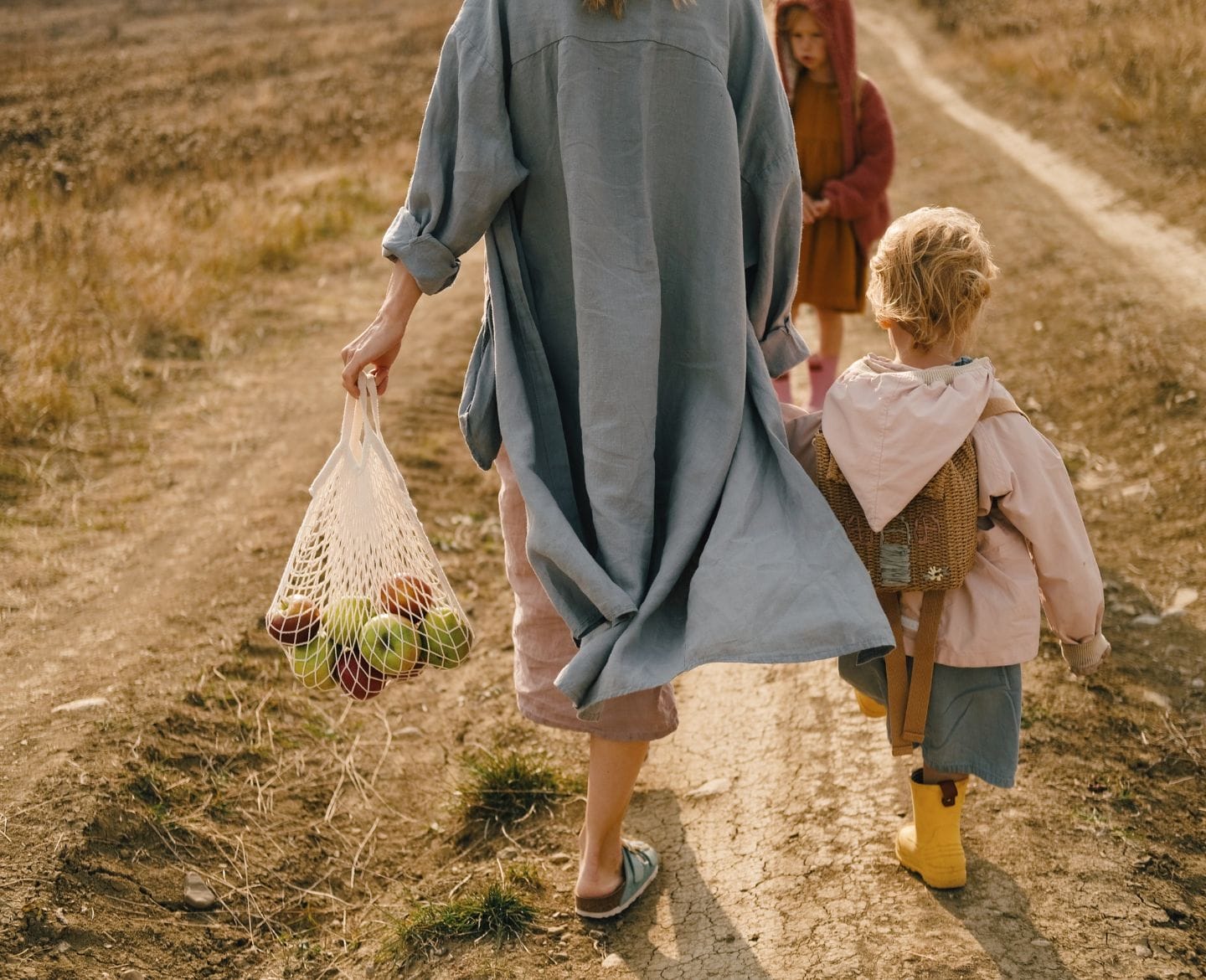The majority of women who seek abortions are already mothers

letuchaya/Twenty20
The latest CDC data show that 60% of abortion patients already have one child.
Misconceptions about abortion—and the people who get them—are widespread. While the picture of who gets abortions in the U.S. has shifted somewhat since Roe v. Wade was passed in 1973—nearly 50 years ago—in the decades since, one group of people seeking abortions has been slowly growing: Mothers.
According to 2019 data from the Centers for Disease Control and Prevention (CDC), 60% of women seeking abortions already have one child. One-third of mothers seeking an abortion have two or more children. In 1974, the percentage of women seeking abortions who were mothers was 46%. In 1989, that number was 50%. And between 2004 and 2014, per the Guttmacher Institute, that number hit 60%, and has stayed relatively consistent since.
Related: U.S. Supreme Court overturns Roe v. Wade—what happens now?
Women choose abortions for numerous reasons, but it’s notable that the majority of women choosing abortions in the recent past are already mothers.
That speaks to two important factors: One, that abortion services are an integral part of reproductive healthcare for many women, just like prenatal care and birth, and two, that being pregnant, giving birth and caring for a child requires such a sacrifice or such a huge amount of resources that many women who have already lived through that hardship are choosing not to put themselves—and their families—through it again.
The rates of motherhood burnout are rampant. According to results from Motherly’s 2022 State of Motherhood survey, 55% of stay-at-home moms report feeling “always” or “frequently” burned out. Forty percent of moms surveyed say more support in general would improve their positive feelings about motherhood. So it’s no wonder that we’re in the midst of a baby bust, not a baby boom.
Abortion rates are increasing
Across the board, abortions are less common than they used to be, but after a 30-year decline, rates are starting to rise.
In 1973, the abortion rate was 16.3 per 1,000 women ages 15 to 44. In 2017, that rate was 13.5. The steady decline seen over the past decades was likely due to better contraceptive use and improved education around sexual and reproductive health, but could also be the result of an increase in recent abortion bans around the country.
However, a new report found that the abortion rate increased in 2020 to 14.4 per 1,000 women in 2020, a 7% increase from 2017.
The report stated that “there were no clear patterns” explaining the increase, but that the recent rise could be partially interpreted as a result of some states expanding Medicaid coverage of abortion care, meaning that poor and low-income patients could now more easily afford an abortion. In addition, local and national abortion funds increased their capacity to help more people pay for abortions, offsetting some of the state restrictions limiting abortion access.
Related: I’m married. I’m a mother. I had an abortion in Texas.
But the typical abortion patient hasn’t changed that much—and they’re still more likely to already be mothers. “There isn’t one monolith demographic who get abortions,” Ushma Upadhyay, a professor with Advancing New Standards in Reproductive Health at the University of California, San Francisco, says to The New York Times. “The same people who become pregnant and give birth are the same people who have abortions at different points in their lives.”
Women should have complete autonomy over their own health decisions, but removing access to abortion is akin to removing access to other key parts of women’s health care—and it limits that autonomy. “Like all patients, women obtaining abortion are entitled to privacy, dignity, respect, and support,” writes The American College of Obstetricians and Gynecologists (ACOG) in a policy statement. “The best health care is provided free of political interference in the patient-physician relationship. Personal decision-making by women and their doctors should not be replaced by political ideology.”
Related: Resources for safe abortion access and reproductive rights
Choosing quality of life
There’s a common argument that women who choose abortion aren’t properly considering the life of their child. But that’s a false narrative. “One of the main reasons people report wanting to have an abortion is so they can be a better parent to the kids they already have,” Professor Upadhyay says.
Guttmacher Institute survey data from 2004 shows that many abortion patients chose to terminate a pregnancy because remaining pregnant would interfere with their ability to care for dependents. Additionally, the same survey found that 40% of respondents stated they were done with childbearing, in contrast to just a third of those who said they were not ready to have children.
Mothers, who make up the majority of women choosing abortion in the U.S., likely already know that at a time when women have no paid parental leave, no universal healthcare, no universal pre-K, a childcare worker shortage and skyrocketing childcare expenses, the cost of raising a child—both financially and emotionally—is a huge burden to bear. Especially if they have existing children. Motherly’s recent State of Motherhood survey found that 58% of moms say that the stress and financial burden of childcare alone has made them consider leaving the workforce.
The impacts on the child of a mother who was denied an abortion are significant. Data from The Turnaway Study (a 2018 landmark study on survey responses from nearly 1,000 women collected over five years who were turned away from abortions because they were too far along in pregnancy) show that when women are turned away from an abortion, their other children are nearly 4 times more likely to live in poverty.
A separate 2019 analysis using data from The Turnaway Study showed that, in addition to being more likely to live in a lower income household without enough money to cover basic living expenses, children of mothers who were denied an abortion are less likely to bond with their mother as compared to children born to mothers who were able to access an abortion and then had a subsequent child later in life.
Related: Forced pregnancy impacts mental health. Here’s how
And when the U.S. maternal mortality rate is greater than that of any other developed nation, dying in childbirth is a significant risk factor for leaving older kids motherless.
Mothers seeking abortion are considering the life of their child and other children and the wellbeing of their family. That still says nothing of the ramifications that pregnancy, childbirth and the postpartum period have on the mother’s health, thanks to the fact that pregnancy is much more dangerous than abortion.
Choosing to have an abortion is complex. It’s even more complex when you’re a mother. Mothers who are making the decision to end an unwanted pregnancy are putting the needs of their existing family first. They’re making the best decision they can to support their family, which is what mothers do. Now that Roe v. Wade has been overturned, we’re denying mothers the right to do just that.
A version of this story was published on June 16, 2022. It has been updated.
Sources
Foster DG, Raifman SE, Gipson JD, Rocca CH, Biggs MA. Effects of Carrying an Unwanted Pregnancy to Term on Women’s Existing Children. J Pediatr. 2019;205:183-189.e1. doi:10.1016/j.jpeds.2018.09.026
Foster DG, Ralph LJ, Biggs MA, Gerdts C, Roberts SC and Glymour MA. Socioeconomic outcomes of women who receive and women who are denied wanted abortions. American Journal of Public Health January 2018.
METHODOLOGY STATEMENT
Motherly designed and administered this survey through Motherly’s subscribers list, social media and partner channels, resulting in more than 17,000 responses creating a clean, unweighted base of 10,001 responses. This report focuses on the Gen X cohort of 1197 respondents, Millennial cohort of 8,558 respondents, and a Gen Z cohort of 246 respondents. Edge Research weighted the data to reflect the racial and ethnic composition of the US female millennial cohort based on US Census data.





































